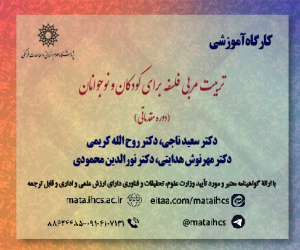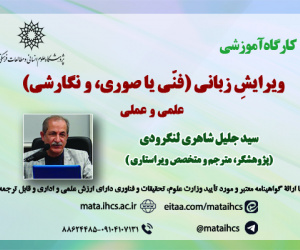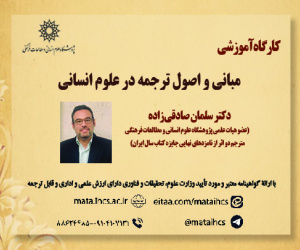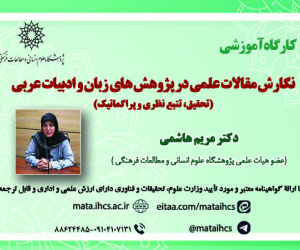پارچه بافی سیسیل در دوره اسلامی (مقاله علمی وزارت علوم)
درجه علمی: نشریه علمی (وزارت علوم)
آرشیو
چکیده
در سال212 هجری قمری/837 میلادی، سیسیل توسط اغلبیون مسلمان فتح گردید و به امارتی نیمه مستقل تبدیل شد. تاریخ سیسیل از زمان فتح مسلمانان تا فروپاشی آنان و آغاز تسلط نورمان ها به سه دوره تقسیم می شود: دوره اغلبیدی، فاطمی و کلبی. با ورود مسلمانان به سیسیل، صنایع آن رو به توسعه نهاد و از جمله پارچه بافی رونق گرفت. کارگاه های پارچه بافی با الگوبرداری از منسوجات اسلامی احداث گردید و در نتیجه اعراب مهاجم توانستند صنعت پارچه بافی پیشرفته ای را در آنجا پایه گذاری کنند. پژوهش حاضر بر این اصل شکل گرفته است که منسوجات سیسیل در دوره اسلامی از منسوجات فاطمیون مصر تاثیر پذیرفته است. لذا از طریق بررسی تاریخی و مقایسه نقوش منسوجات با موضوع مشترک، پارچه های این دو منطقه بررسی گردید. بر اساس نتایج به دست آمده حضور بافندگان مسلمان در کارگاه های پارچه بافی سیسیل و نیز تجارت پارچه نقش مهمی در انتقال نقوش پارچه های فاطمیون به سیسیل داشته است. در این زمان نقوش اسلامی و خط نوشته های عربی در تزئین منسوجات به کار می رفت. تداوم نقوش منسوجات فاطمی، مخصوصا خط نوشته، از شیوه های متداول بافندگان مسلمانان بوده است که حتی بعد از حاکمیت نورمان ها در سیسیل ادامه می یابد و میزان زیادی از این منسوجات به کشورهای مسیحی غربی صادر می شود.Textiles in Sicily During Islamic Era
Textiles in Sicily During Islamic Era In 837 AD Sicily was conquered by muslin Arabs. Muslim dynasties ruled for over 200 years and they called the island home. Gradually Sicily turned to a wealthy place. Knowledge of Muslims with Islamic culture were in zenith at that time. Sicilian history from Muslim victory until fall and conquest of Normans, can be divided into three duration, i.e. Aghlabids, Fatimids and Kalbids. The Islamic kingdom was closed down by Roger I, the Norman king. During Islamic governorship all industries and crafts were flourished, especially fabric weaving was extended. Many weavers from Islamic lands, such as Egypt, migrated to Sicily and were employed in the workshops to make luxury fabrics. These weavers used Fatimid’s designs and motifs for fabric decorations. Also calligraphy were adopted and Tiraz system conducted. Therefore many Islamic motifs and Arabic inscriptions were woven or embroidered on Sicilian fabrics. Sicily was well known for its textile production during the Islamic period of its history. At that time merchants were interested in trading silk fabrics from Sicily to Italy and European countries as well. Still the Arabic inscriptions that had been adopted from Islamic textiles, were used to decorate Sicilian textiles. Therefore many textiles with Quranic verses and Arabic calligraphy went in Christian churches and used as clothes or tomb covers. They were well prized, expensive and even found their way in to royal collections. Sicily had been a province of Byzantium and had considerable Greek population. The effect of Islamic styles and techniques on Sicilian fabrics was considerable. Even after fall of Islamic rule in Sicily, The local weavers used Islamic designs and extended after victory of Roger, the Norman king. He supported weaving workshops and ordered for new tiraz workshops in his palace. During his leadership, he combat with Greece and capture many Greek weavers and pushed them to work in fabric weaving factories. They trained Sicilian weavers and used also Byzantine designs to decorate fabrics. Therefore Sicilian fabric designs were affected by them. However Arabic inscriptions were still applied by the weavers. Muslims arts and handicrafts were exported from Sicily to European countries. Sicily had been flourished in the silk production and many cheap and expensive silk fabrics were exported to Egypt to be used by Islamic royal family. Many magnificent and luxury fabrics were made by weavers with Islamic and Byzantine designs. During Arab invasion, Muslims captured all textile workshops in Iran, Egypt and Byzantine. Therefore great knowledge of weaving techniques was enhanced. The silk weaving workshops were renewed to produce excellent fabrics for the king and his family and friends. Therefore these techniques were expanded in all Islamic lands by migration of weavers and handicraftsmen. Sicily absorbed all the Islamic and Byzantine weaving techniques and the textile industry was flourished and expanded. Although the textile factories in Sicily were famous under the Muslim rulers, and then carried on under the Normans, unfortunately the number of existed Islamic textiles from Sicily is rare other than the regalia of Roger II in Vienna.



